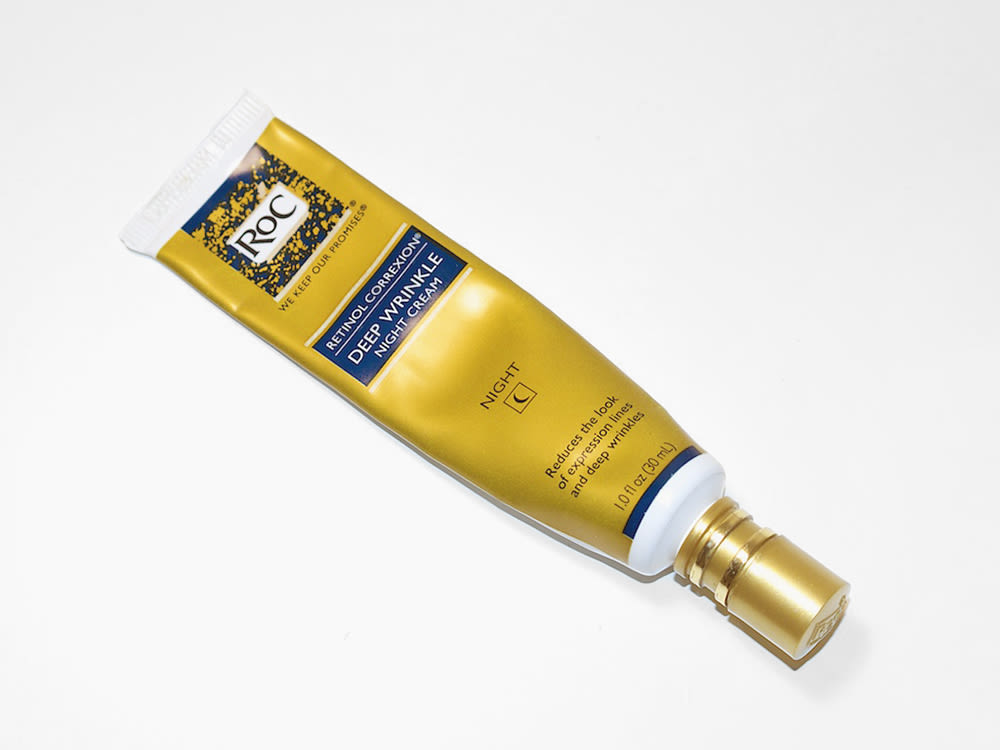First, a disclaimer: this is no treatise against wrinkles. And that's OK. One look at, say, Vanessa Redgrave or Cicely Tyson and the enviable, inimitable beauty of their lined and smiling eyes and all fears of “looking old' should really evaporate. Those ladies wear their age, and they wear it well.
But for those of us waiting to see just how well our faces will stand up to gravity and the like, a little topical retinoid experimentation can’t hurt (too much). A derivative of Vitamin A, the MVP of anti-aging treatments is available both over-the-counter (see: Retin-A) and in the skincare aisle (via less concentrated retinol products). My prescription-free entrée into this world came about a year ago in the form of RoC Retinol Correxion Sensitive Skin Night Cream. Wanting to get the better of burgeoning crow’s feet but not quite knowing where to begin, I selected this, my first eye cream, almost wholly based on nifty packaging: RoC’s label features a mortar and pestle set over a gold and navy composition notebook-marbled background. Fancy and academic, I thought. And fairly affordable at a mid-range price of about $20.
I’ve studied up since. Retinol takes a multi-pronged approach to skin reparation, by minimizing the look of pores, stimulating collagen production (so your skin appears plumper), and improving uneven pigmentation brought on by sun damage, etc. Because it works to increase cell turnover, a common reaction to retinol application is a mild burning sensation. While not exactly painful, this can take some getting used to; it’s strange at first to accept the idea that raw skin is on its way to becoming better skin. For their part, the experts at RoC (who were the first to introduce the use of retinol in a skincare line) encourage customers to “ease into” usage, and assure that residual redness and tingling will dissipate over time. Within 12 weeks, skin should begin to adapt and improve.
RoC’s Sensitive Skin Night Cream is the best choice for beginners; the burn is barely perceptible and results are still evident. After finishing my tube (a thin layer applied nightly around my eyes and mouth meant it lasted about six months), I moved on to bigger guns—the Retinol Correxion Deep Wrinkle Night Cream. This upgrade was not because new wrinkles had gotten deeper (rather a happy stalemate seemed in the works), but because the stronger formula’s packaging was gold, and thus more eye-catching. Of course, the retinol concentration is higher here, and thus more eye-burning—but what’s the takeaway from that old story about the frog in a pot of boiling water? The more gradual the change, the more comfortable we are with it…logic I find to be true for both aging and anti-aging treatments alike.
—Lauren Maas
Photographed by Ben Jurgensen.

